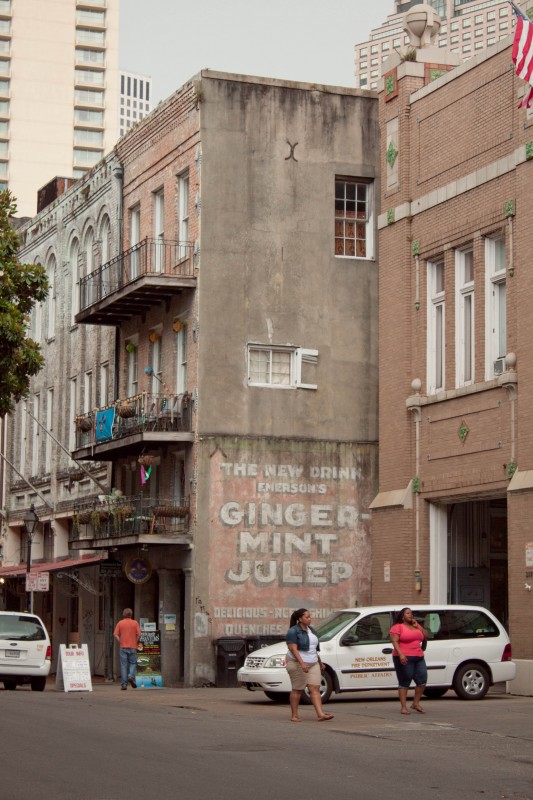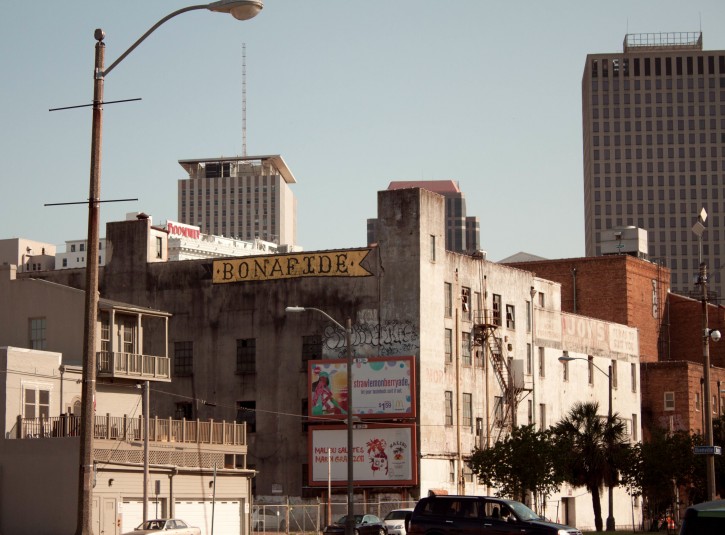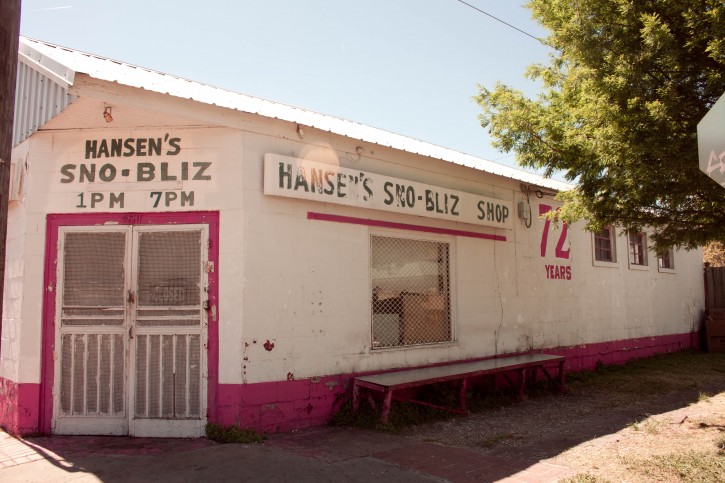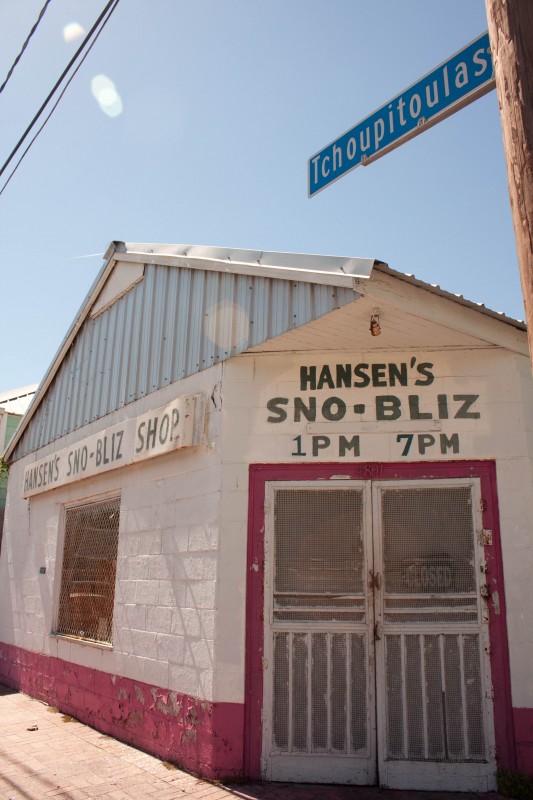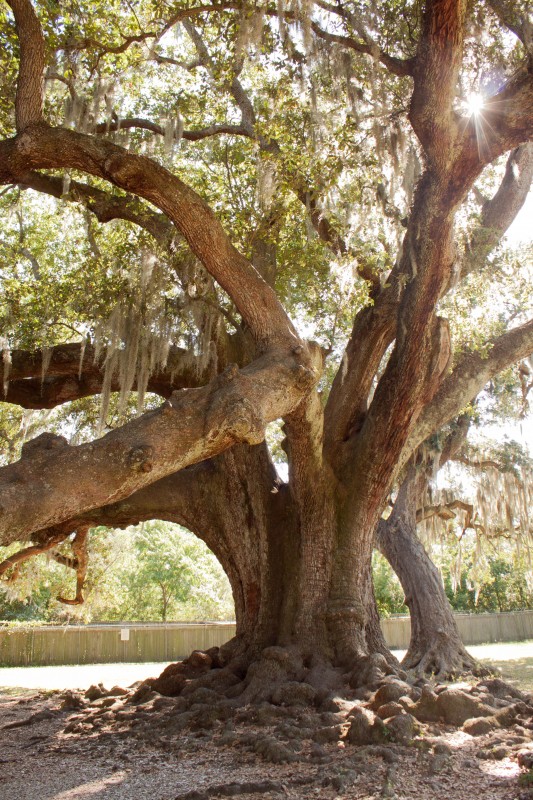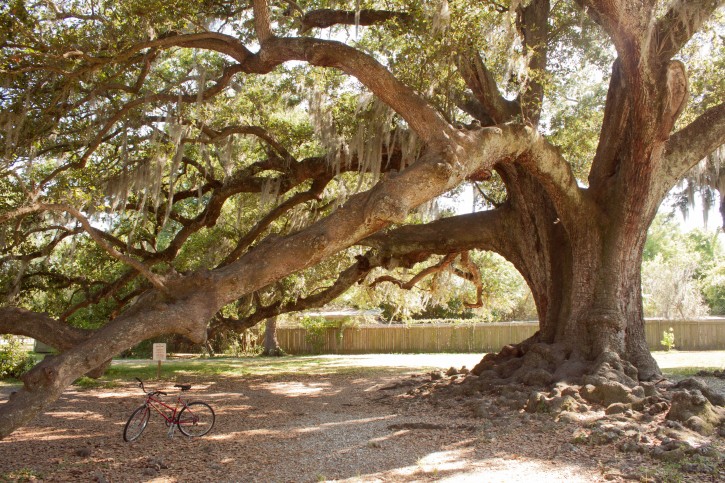Arriving at night leaves the traveler with a skewed perspective. Mid-City seemed dark and mysterious, dangerous even, the enormous granite elk in Greenwood cemetery portentous. In the light of day, of course, things had changed. All pigs look black at night. Though there are a lot of homes still abandoned in Mid-City, it seems like a lovely neighborhood with a lot of families. Abandoned homes also seemed common in many neighborhoods. The population post-Katrina is little more than half what it used to be, with empty houses lingering, some still with the hieroglyphic X’s and other symbols denoting unknowable things about the people who live(d) there.
The Lower Ninth Ward showed its own unique scars. Juxtaposed with tours of the bizarre Brad Pitt Make It Right houses, many of the plots were completely vacant, overgrown with tall grass covering all but the last glimpses of former dwellings, pipes sticking up or a foot of foundation standing. Signs for mold removal hung on most telephone poles, along with hand-drawn signs advertising “We Cut Big Lot Grass.” Despite the devastation, though, the Lower Ninth had a lot of new construction, too.
New Orleans feels immediately different, and free. In an evermore globalized world, where every city seems a variation on the theme, New Orleans is not. I met a self-proclaimed prophet while waiting for the bus on St. Claude who told me many things about lasers shooting from helicopters hovering over the city and his inventions to cure cancer, but nothing more interesting than what he told me about why he loves his hometown. He’s lived there all his life, except for a brief stint in Pennsylvania, and he returned eagerly because, as he says, “This is where I feel free.” When we were hanging out at the End of the World, where the Industrial Canal meets the Mississippi, I overheard a woman say, “That’s what I love about yoga in New Orleans–even the teachers drink and smoke. I’m used to New York yoga teachers who’re all vegetarians. Here they talk about eating and drinking.” There are sandwich board signs in front of most bars advertising “To Go Drinks” (exactly what it sounds like). There are things you can get away with in New Orleans that make it feel outside the purview of society, the real end of the world, life after the world ended for many six years ago. But more than just the laws, or lack thereof, is the spirit that emanates from the city. People say hello to you when you pass; it’s rude not to. As we rode down Palmyra Street on our bikes, children smiled, a man on his porch shouted, “Have a nice day.”
As we walked our bikes up Frenchman on my last night, listening in on the different songs emanating from the clubs, we stopped in front of a sushi place with an all-Japanese three piece band. The trumpeter was singing “Bye, Bye, Blackbird” in his brassy voice. After the song finished, we rode home along Bourbon Street, all neon and noise, but after a couple of blocks chose a different route, I think so as not to lose the lullaby in our heads. We wound through the Treme at midnight, empty, quiet, only a couple of lonely dogs chasing us for a few blocks. As I rode on the sidewalk I caught a glimpse through an open front door of what looked like an abandoned house, and saw a pair of women’s bare feet, lying on the floor, sleeping I hope.
New Orleans, 12-17 May 2011
